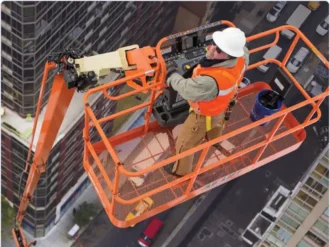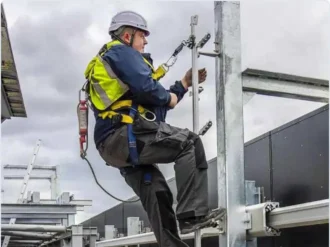Introduction
Cleaning windows may seem like a simple task, but the job is actually as hazardous as it is necessary. The majority of accidents in this trade take place due to improper use of equipment or due to unreliable gear. In other words, most injuries can be prevented. To reduce the number of window washing incidents in your company, safety training is the first important step.
Potential Hazards
The most common risks associated with window washing are:
Falls from Height.
Most ground-floor and indoor windows can be reached by means of a ladder, but this is not the case with outdoor windows that are more than 9 meters off the ground. Window cleaners are often required to work at great heights using suspended access equipment (SAE) or a system of ropes and anchors. As such, the majority of accidents in this trade are related to falls. The latter can be prevented if employees are better trained in fall arrest and the hazards of working at heights.Unpredictable Weather.
One of the greatest enemies of window washers is the wind, which can speed up unpredictably and make the entire task significantly more difficult. This is of particular concern for employees who must use rope access in order to reach areas that are impossible to clean otherwise.Inadequate Use of PPE.
In a trade where most injuries result from falls, personal protective equipment is of paramount importance. In addition, window washers are required to use industrial cleaners that may classify as hazardous materials and that can have adverse effects if not handled properly. Gloves, overalls, and respirators are necessary to maintain the health of window washers who are frequently exposed to such substances.Overhead Obstacles and Electric Supply Lines.
Employees tasked with washing outdoor windows can be thrown off balance if they accidentally hit an overhead obstacle. This is especially dangerous in situations where electric supply lines are also present because the latter present a high risk of electrocution.
Incident Prevention
Personal protective equipment and properly functioning access gear are two of the most essential tools for professional window washers. However, providing the right equipment is not enough to ensure a worker’s safety. The latter must be aware of the potential hazards associated with their line of work and be able to use the gear correctly if they are to prevent an accident. This can only be achieved through proper training.
Provided that the equipment is safe to use and that employees are sufficiently trained in incident prevention, another step that cleaning businesses can take is the thorough assessment of each site. This can be done by visiting the site in question and identifying potential risk factors that may interfere with the work of a cleaning crew.
A number of factors must be considered during the assessment, including any windows that may be particularly difficult to reach, the weather forecast, any ground or overhead obstacles, the existence of proximate electric supply lines, and the stability of anchor points for rope and SAE access. Prior to the completion of the job itself, a report should be drawn up to address these issues accordingly.
Recommended Safety Courses



What You Can Do to Stay Safe
As a window cleaner, you have the right to be informed with regard to the hazards that are commonly associated with your line of work. Furthermore, your employer is required by law to provide sufficient safety training for you and your colleagues. By implementing the strategies you learn during these courses in your daily routine, you can significantly reduce the risks presented by washing windows at height.

